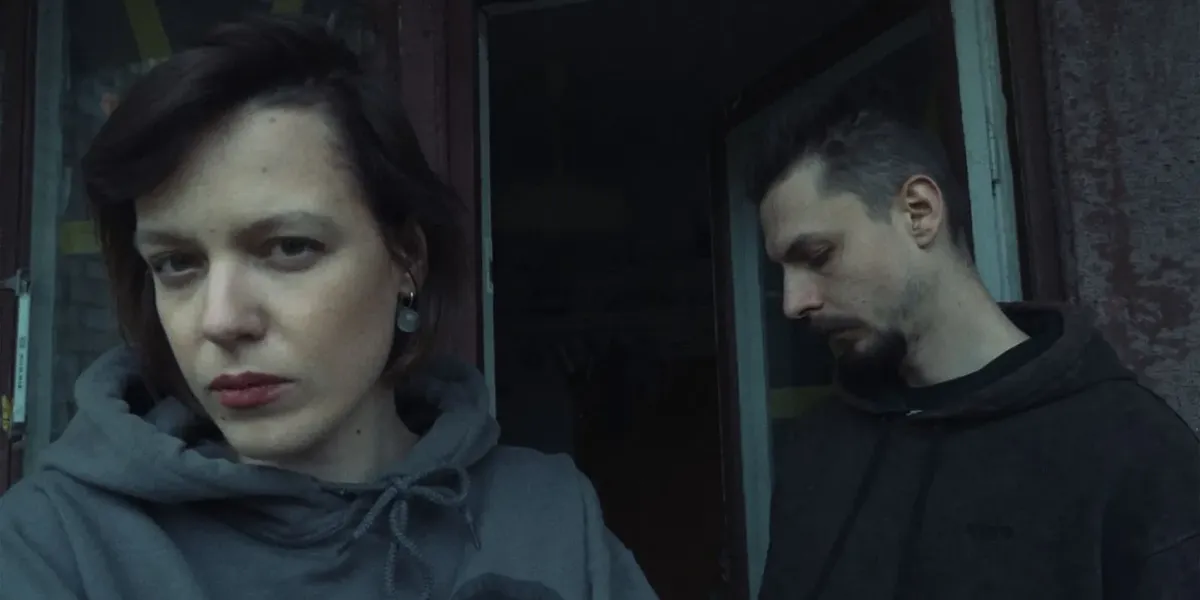
This post was written by Meagan Keane and originally appeared on Adobe blog on Jun. 15, 2023.
The film showcases life under the shadow of war—a young couple wakes to air raid sirens and has tea on their balcony, neighborhoods lie in ruins, and the community comes together to sweep up broken glass and rubble. Rule of Two Walls documents how Ukrainian artists help process their current reality and the vital role of community during a time of crisis.
Read on as Gutnik shares the challenges of filming and editing in a war-torn country, his post-production workflow, and the inspiration behind his first documentary, that, as he says, “I was born to make.”
Can you tell us about your experience as a filmmaker and how you got started in the industry?
I started as a film editor and had my first breakthrough cutting Christina Choe’s Nancy, which received the Waldo Salt Screenwriting Prize at Sundance in 2018. In 2020, I directed my first narrative feature, Materna, which was awarded Best Actress and Best Cinematography at the Tribeca Film Festival. Rule of Two Walls is my first documentary, a personal response to the start of the full-scale invasion of Ukraine, where my sister, parents and grandparents were born.
How and where did you first learn to edit?
In college I was working at the World Bank, where I shot a documentary about the Bank’s checkered past and work on Involuntary Resettlement and Indigenous Peoples. The Bank wouldn’t edit the film, so I had to find an editor. A classmate of mine did a first pass. I learned from watching him edit and ultimately finished cutting the film myself.
How do you begin a project/set up your workspace?
The prospect of having to review footage for the first time is something I try to avoid until the absolute latest possible moment. I begin a project by setting up my workspace, arranging it and rearranging it, over and over again. Gene Hackman talks about how procrastination is essential to his process as an actor. He avoids dealing with the work until it’s no longer a choice, until he’s manufactured enough anxiety that finally doing the thing takes on an emotional, involuntary dimension. I’d like to think this is how I start. At least that’s how I rationalize my stall tactics. Once I manage to finally begin, I watch down what I shot and pull selects.

Tell us about a favorite scene or moment from this project and why it stands out to you.
There is a scene in which a Ukrainian cameraman stands a mere few feet away from a market being bombed by Russian missiles. The cameraman holds the shot for the duration of the shelling, refusing to run. I think about this moment every day, and it reminds me why cinema matters.
What were some specific post-production challenges you faced that were unique to your project? How did you go about solving them?
My team in Ukraine has been under attack throughout the post process. Our workflow has had to continually adjust to missile strikes and blackouts. What is more frightening than receiving a text from your producer that there is an upload delay because of bombing is how frequent and normal it became.
What Adobe tools did you use on this project and why did you originally choose them? Why were they the best choice for this project?
I used Premiere Pro, my native tongue, quick and dirty, like an old BMX. Also, our colorist shared links with me on Frame.io to review the grade. It was an efficient and user-friendly way to work remotely.
If you could share one tip about Premiere Pro, what would it be?
If you want to make a style change to all the subtitles in your film at once (size, font, color, shadow, etc.), you can do this by highlighting all the caption clips in your subtitle track before making the change. This may very well be obvious to many, but I spent an embarrassing number of hours making edits to individual subtitle clips before discovering this shortcut. Thank you, Adobe.

Who is your creative inspiration and why?
My three-year-old son, Ronan, and my one-year-old daughter, Liv Evgenia. I want them to one day be inspired by my work and be proud of me.
What’s the toughest thing you’ve had to face in your career and how did you overcome it? What advice do you have for aspiring filmmakers or content creators?
Fear of failure hobbled me in my first efforts, and it made me make less things. Even worse—it made me make things that I thought would make my peers like me more, even though the things I was making had nothing to do with who I am. Though I still have a long way to go, I have tried to overcome this fear by being more vulnerable and honest in my work. As dramatists, our job is to make sense and meaning of failure — to chronicle our characters’ missteps, their wins AND losses—that cumulatively may lead them to the possibility of grace. But how can we be experts on the problem of failure if we ourselves avoid failure at all costs? My advice to aspiring filmmakers is to make more mistakes. Take more risks. Let your freak flag fly, and you’ll succeed more.
Share a photo of where you work. What’s your favorite thing about your workspace and why?
My favorite thing is that it changes every time I start a new project.

This post was written by Meagan Keane and originally appeared on Adobe blog on Jun. 15, 2023.














